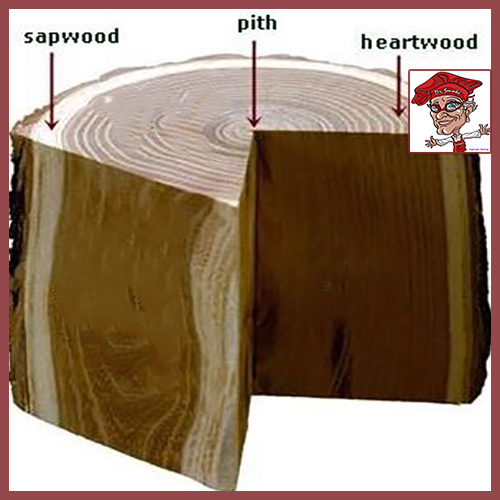Sun 26 Apr 2020
IS HEARTWOOD REALLY THE ‘HEART’ OF THE TREE?
Posted by DrSmokeRead other related stories: Cooking , General Smoking Information , Smoking Tips
No Comments

Cross section of a harvested hardwood tree showing the heartwood of the tree
IS HEARTWOOD REALLY THE ‘HEART’ OF THE TREE?

By now you’ve come to recognize SmokinLicious® as the Company that produces it’s cooking wood products from only heartwood. Yet, there are still many questions out there as to what that means for the individual using our products. Is heartwood where all the life forces of the tree thrive?
The short answer is, no, but there are benefits to using woods derived from this part of the tree for cooking. Let’s explore!
Mini molecular-biology course: wood is an organic material that is porous and fibrous. It contains hundreds of organic compounds but there are three primary compounds responsible for the cell construction in trees: Cellulose which is a glucose that is tasteless and odorless but comprises 40-50% of the cell. It is crystalline so it provides for the strength of the cell wall. Hemicellulose is also a glucose and carbohydrate but unlike cellulose, it has little strength and makes up 15-25% of the tree’s cell structure. Lignin is the cell compound that is responsible for the structural materials in the support tissues of wood and bark and makes up 15-30% of wood cells. Lignin is what fills the cell wall spaces between the cellulose, hemicellulose, and pectin components and is crucial for conducting water. Lignin yields more energy than cellulose when burned. Most importantly, lignin is what gives wood-fired cooked foods their flavor and aroma.
“On to Heartwood”:
Now, all wood starts life as sapwood, the living, outermost portion of the tree that is just under the bark. Sapwood is where water and dissolved minerals are transported from the roots to the crown of the tree. Essentially, it is where energy for the tree is stored. As older sapwood cells age and die, they become heartwood, which plays no role in the transport of essential nutrients for the tree. Then what are the benefits to heartwood?
Heartwood is known to be resistive to insects and decay. An additional benefit is the heartwood tends to be darker in color than the sapwood. Because the cells die off, the moisture level is less difficult to manage than sapwood, meaning it can be dialed in with greater ease. That’s why traditional firewood can take so long to season (up to a year) as it will contain bark, sapwood and heartwood due to the splitting of the harvested tree. The combination of these three distinct components can alter the aroma and flavor when used together in cooking, producing a more muddled flavor profile. This is where the risks for toxicity in cooking reveal themselves.
One of the reasons that SmokinLicious® has specific hardwood species in our product offerings is because the hardwoods we’ve selected tend to have a healthier heartwood to sapwood ratio, are known to have less risk of heartwood rot, and have lignin percentages that are more complimenting to cooking. We’ve done the hard thinking for you so go ahead and select one of our hardwoods with confidence that you will get a super aroma and taste to your wood-fired menu items!

More Related reading on this subject
Additional Reading Related to Heartwood:
-TO BARK OR NOT
-10 THINGS TO CONSIDER BEFORE PURCHASING WOOD FOR COOKING, GRILLING & SMOKING
-THE ART OF CUSTOMIZING YOUR COOKING EXPERIENCE
Purchase Products:
Wood Chunks- Double & Single Filet

Dr. Smoke- “A little biology knowledge can help your cooking with the heartwood of the tree!”